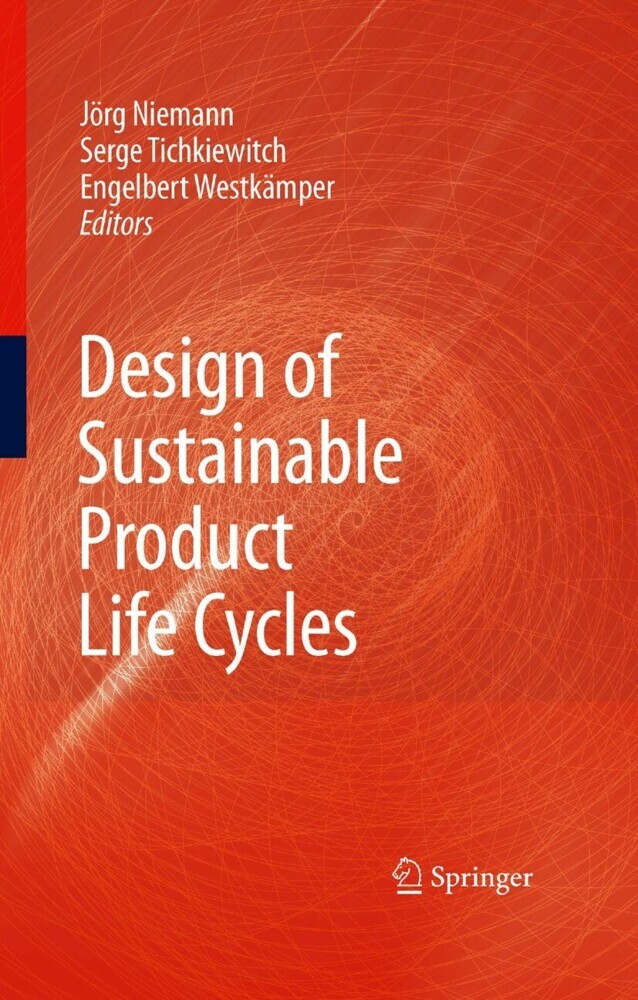Niemann, Jörg (Hrsg.)
Tichkiewitch, Serge (Hrsg.)
Westkämper, Engelbert (Hrsg.)
Design of Sustainable Product Life Cycles

Beschreibung
Life cycle design is understood as "to develop" (to plan, to calculate, to define, to draw) a holistic concept for the entire life cycle of a product". Life cycle design means a one time planning during the concept phase of a product in which the pathway of a product over the entire life cycle is determined. So e.g. the planning of possible services for a product during its utilization phase, the way of material recycling, how and which parts can be reused, how the logistics for recycling will be organised or how the product can be used afterwards. So it is a conceptual pre-design of all later activities over the life cycle.
By this understanding the book delivers a really holistic approach because before a product is physically made a life-long concept and utilization scenarios with closed material and information cycles have to be developed. This promotes a real "thinking in product (life) cycles".
The book addresses professionals as well as researchers and students in the field of product life cycle management. Different methods in the field of product design, operation and recycling will be presented and finally merge to an integrated method of product life cycle design. Readers will benefit from the holistic approach which enables them to design successful products by the implementation of closed loop product life cycles. Product life cycle design Generating sustainable product life cycles explains the importance of a holistic long-term planning and management approach to reaching a maximum product benefit over the entire life cycle. The paradigm of thinking in product life cycles supports manufacturers in shaping successful products. The book promotes various methods and tools for life cycle management and merges them into an integrated planning approach. In this monograph Europe s leading academic experts in the field of life cycle management have consolidated their expertise.
Readers will learn about different tools and methods for life cycle modelling and digital information support. Industrial examples show how a consistent product data management with closed-loop information cycles enables manufacturers to activate the hidden performance potentials of their products and in their production lines. In this respect Product life cycle design also illustrates the benefits of a networked production including integrated product service systems and innovative business models, and presents methods for evaluating the economic and ecological impacts of life cycle design, highlighting them with practical examples.
The book addresses professionals as well as researchers and students from the field of life cycle management. Practitioners and researchers pursuing life cycle excellence will benefit from the comprehensive coverage of methods and various examples from industry.
By this understanding the book delivers a really holistic approach because before a product is physically made a life-long concept and utilization scenarios with closed material and information cycles have to be developed. This promotes a real "thinking in product (life) cycles".
The book addresses professionals as well as researchers and students in the field of product life cycle management. Different methods in the field of product design, operation and recycling will be presented and finally merge to an integrated method of product life cycle design. Readers will benefit from the holistic approach which enables them to design successful products by the implementation of closed loop product life cycles. Product life cycle design Generating sustainable product life cycles explains the importance of a holistic long-term planning and management approach to reaching a maximum product benefit over the entire life cycle. The paradigm of thinking in product life cycles supports manufacturers in shaping successful products. The book promotes various methods and tools for life cycle management and merges them into an integrated planning approach. In this monograph Europe s leading academic experts in the field of life cycle management have consolidated their expertise.
Readers will learn about different tools and methods for life cycle modelling and digital information support. Industrial examples show how a consistent product data management with closed-loop information cycles enables manufacturers to activate the hidden performance potentials of their products and in their production lines. In this respect Product life cycle design also illustrates the benefits of a networked production including integrated product service systems and innovative business models, and presents methods for evaluating the economic and ecological impacts of life cycle design, highlighting them with practical examples.
The book addresses professionals as well as researchers and students from the field of life cycle management. Practitioners and researchers pursuing life cycle excellence will benefit from the comprehensive coverage of methods and various examples from industry.
Produktdetails
| ISBN/GTIN | 978-3-540-79083-9 |
|---|---|
| Seitenzahl | 209 S. |
| Kopierschutz | mit Wasserzeichen |
| Dateigröße | 18992 Kbytes |

